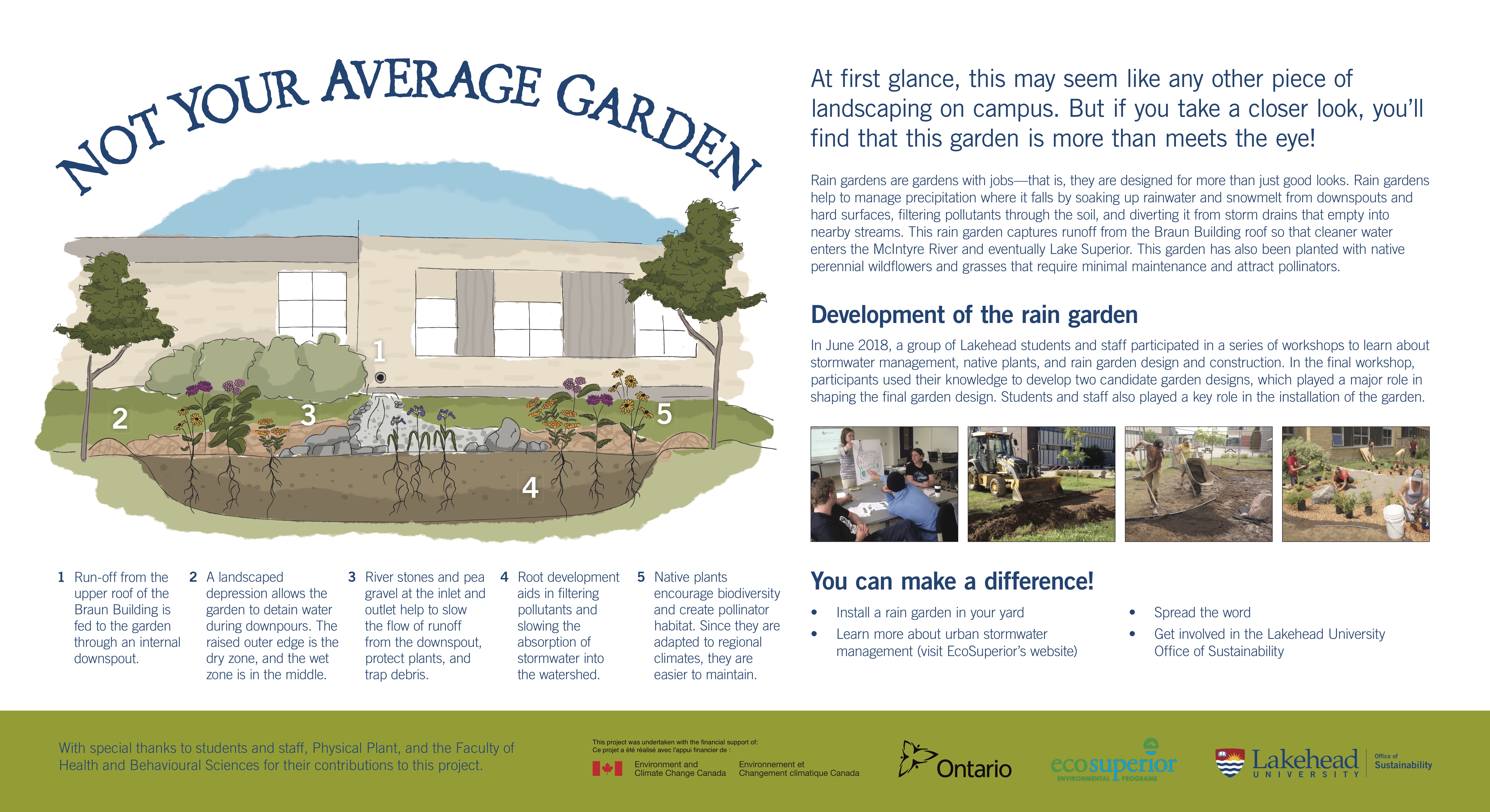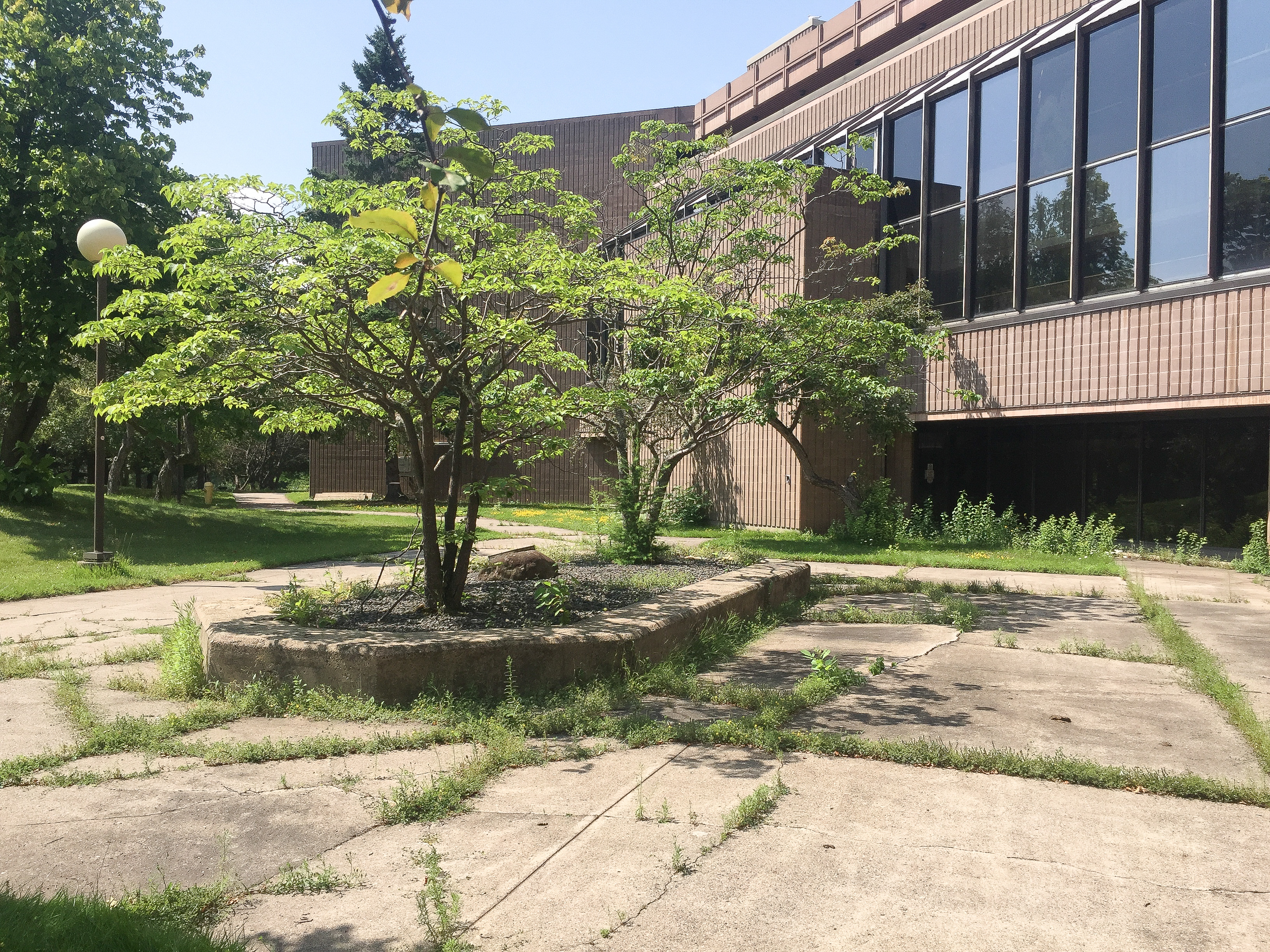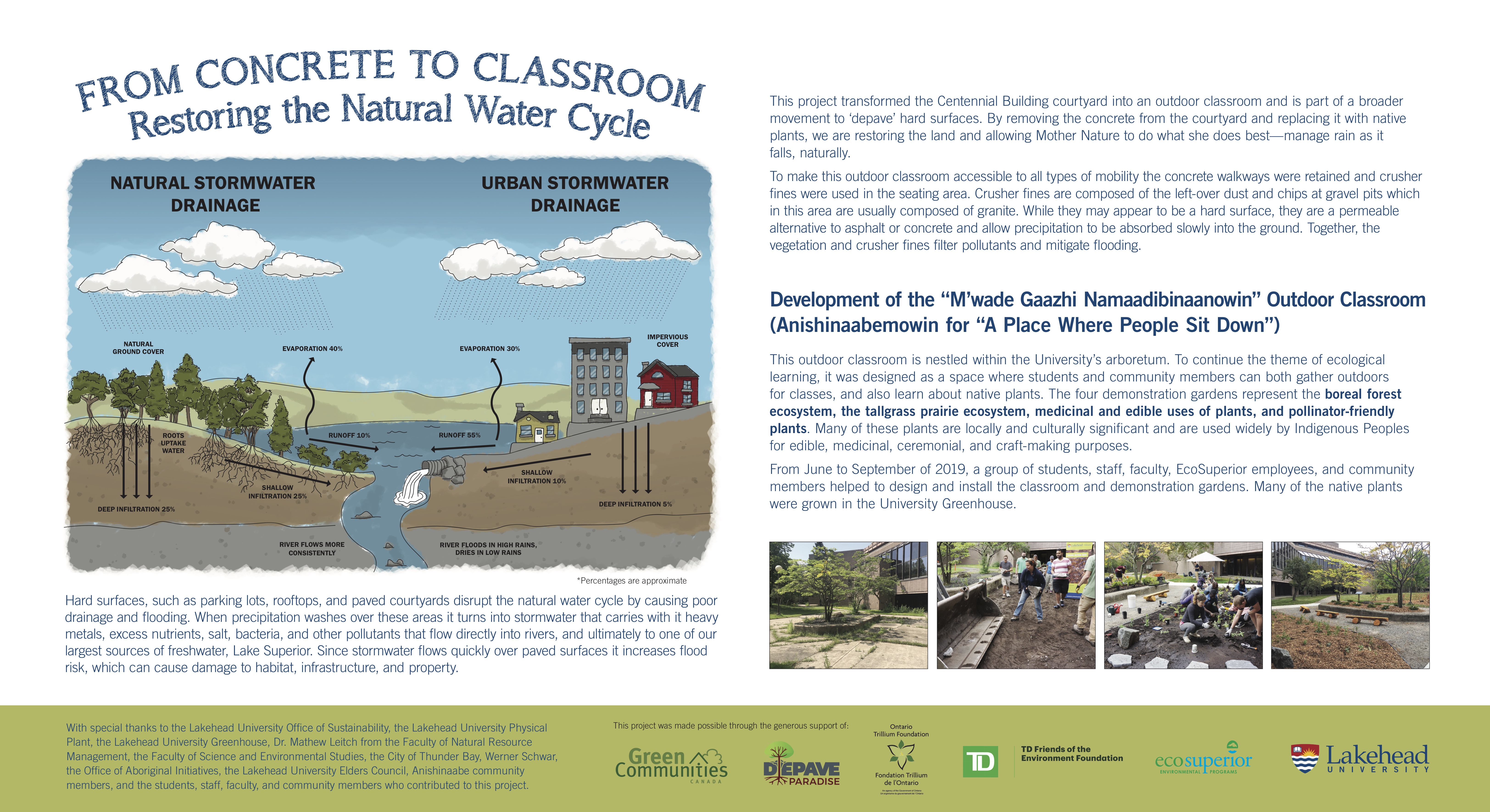Outdoor Learning Spaces
Lakehead University has a number of formal and informal outdoor learning spaces on both of our scenic campuses. In Thunder Bay, faculty and staff can reserve four of these spaces through our Room Scheduling Portal. The Climate Action Park can be reserved for classroom purposes by creating a firepit booking with Food and Conference Services. The reservable spaces are:
- Braun Building Courtyard
- CASES Labyrinth
- M'wade Gaazhi Namaadibinaanowin Outdoor Classroom
- The Wellness Path
Please follow the following instructions to reserve an outdoor learning space in the Room Scheduling Portal:
To access the portal, go to: https://info-eportal.lakeheadu.ca/portal/p/Home. Click the user icon in the top right corner to log in using your Lakehead University AD login (the same as your MyInfo or MyEmail user login). If off campus or otherwise not connected to Lakehead’s Wifi/Internet, you will need to connect to the VPN.
On the lefthand menu, go to ROOMS and then use the drop-down menu under the TBAY- Thunder Bay campus to find OUTD - Outdoor Learning Spaces (Main Campus). You will then find a list of the four bookable outdoor learning spaces. Click to view more information and photos of each space, and to view the calendar or create a new booking for the space. Bookings will be approved by the Scheduling Office for normal university operating hours the same as an indoor classroom would be.
Please note that outdoor learning space bookings will be paused for the winter as these spaces are either inaccessible or not cleared of snow in the winter. If you’d like to reserve a space in the winter, please contact the Scheduling Office directly at schedule@lakeheadu.ca for approval.





